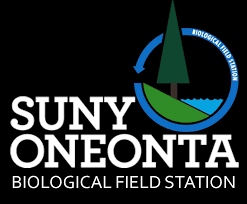From the Biological Field Station,
Latest Algae Bloom Data

The Biological Field Station (BFS) collected samples for total microcystin analysis around Otsego Lake yesterday, 12 September 2022. Results for each location are below. We provide these results for informational purposes and to aid in decision-making; these results represent a snapshot in time. Bloom conditions are known to change quickly.
HAB conditions were evident at 6 of the 7 locations visited; community members reported HAB conditions at points along the West shoreline north of Three Mile Point, in the North end, and Hyde Bay. When visible accumulations are present on the shoreline or the water surface, caution is warranted. A link to DOH guidance is below. The cyanobacteria causing the bloom is called Microcystis aeruginosa.
To put these concentrations into context, according to the Department of Health Regulated Swimming Beaches are closed based on visual indication of a bloom and re-opened after the bloom has dissipated (visual assessment) and the total microcystin concentration is less than 4 ug/L in a sample collected the following day. Link to Dept. of Health Bloom Response and Regulated Beaches page
| Sample Location (12 September 2022) | Total Microcystin (µg/L) | Water Surface Conditions |
| Otsego Sailing Club Docks | 4.0 µg/L | Surface accumulations beginning to form. |
| Three Mile Point Swim Area | >5 µg/L | Small surface accumulations present. |
| 5 Mile Point East End of Docks | >5 µg/L | Surface accumulations present in open water around docks, in boat slips; dense accumulation between shore and docks. |
| BFS Thayer Boathouse Dock | >50 µg/L | Surface accumulations present in open water around docks; dense accumulation along shore to North and South. |
| Springfield Public Landing Swim Area | >50 µg/L | Extensive surface accumulations in swimming area, along shoreline, and around docks. |
| Fairy Springs Park Swim Area | 0.8 µg/L | No surface or shoreline accumulations were visible; water appeared clear, with a low abundance of colonies visible in surface waters. |
| Cooperstown Country Club Dock | 2.1 µg/L | No surface or shoreline accumulations in open waters; small surface accumulation was building in lily pads. |
| BFS Main Lab Dock | >5 µg/L | Surface accumulations present in open water around dock, covering a large area. |
Analysis Method: Total Microcystin ADDA ELISA (EPA Method 546); results in micrograms per liter (µg/L).
The BFS is not an ELAP-certified laboratory.
Sample Collection Notes: Collection began at 2:10pm at the BFS Main Lab Docks, followed by Fairy Springs Park, after which we proceeded clockwise around the lake. Weather conditions: part sun/clouds, generally calm, though a slight onshore breeze was felt at several sites. Air temp 77° F. As noted above, surface and dense shoreline accumulations were observed at many locations – samples were taken from docks, not directly from ‘scums’. Lake users should check the shoreline conditions before allowing pets into the water.
We will continue to monitor toxin concentrations through October if necessary; we will post updates on the BFS homepage weekly. The next sample collection is anticipated for Wednesday, September 14.


HAB is like the weather: everyone talks about it, but no one does anything about it
HAB is like the weather: everyone talks about it, but no one does anything about it
I was in the lake early in the day by the beach at Hickory Hills Motel,before the heavy accumulation showed, on Sept.9th. Later the surface of the lake was obviously covered with thick yellow algae. Am I at risk of a health issue? I’m feeling fine, but want to check to be sure. Thank you.
I was in the lake early in the day by the beach at Hickory Hills Motel,before the heavy accumulation showed, on Sept.9th. Later the surface of the lake was obviously covered with thick yellow algae. Am I at risk of a health issue? I’m feeling fine, but want to check to be sure. Thank you.